Insights Courtney Glavis-Bloom Shining the spotlight on aging to find a cure for Alzheimer’s disease
When Courtney Glavis-Bloom was in high school, her maternal grandparents were diagnosed with Alzheimer’s disease.
“I flew out to Texas to see my grandparents with my mom, and we found the turkey that we had sent them for Thanksgiving still in the fridge. It was springtime, so we knew something had to be done,” she says.
Her grandparents moved to San Diego and, as their caregiver for many years, Glavis-Bloom saw firsthand how dementia robs individuals of their connections to each other, family and the world.
Now, as a senior staff scientist in the lab of Professor John Reynolds, Glavis-Bloom studies the brain areas and pathways that are affected in aging in the hope of finding a cure for Alzheimer’s.
Early Life
As a teenager in San Diego’s Scripps Ranch neighborhood, Glavis-Bloom balanced a competitive softball career with serving as science team president at La Jolla High School. Her talent as a pitcher got her recruited to Yale University’s softball team. However, shortly after arriving, she sustained a career-ending wrist injury.
“Although I was initially devasted by the injury, it was a blessing in disguise,” says Glavis-Bloom. “I used to have softball practice twice a day, and the courses I could take were limited because of my schedule. After the injury, I was able to take more science courses and work in three different science labs simultaneously.”
Path to Salk
At Yale, Glavis-Bloom initially intended to become a veterinarian. However, studying the brain offered another exciting avenue, and Glavis-Bloom shifted her studies to focus on neuroscience.
“The brain is resilient and filled with cells that last our entire lives,” she says. “The more I thought about it, the more I became enthralled with learning about the aging brain and cognition.”
During her PhD in neuroscience and animal behavior at Emory University, Glavis-Bloom studied a memory center of the brain called the hippocampus and how the brain compensates when this region is injured. She wanted to understand why the brain can adapt to injury early in life but can’t compensate enough in old age or in age-related neurodegenerative diseases, such as Alzheimer’s. Her work led to a few non-academic positions where she examined how potential therapies could aid cognition in healthy brains and those with Alzheimer’s degeneration.
In 2018, a multidisciplinary team of Salk researchers, including Reynolds, was awarded $19.2 million over eight years by the American Heart Association-Allen Initiative to study aging and why the process is the primary risk factor for neurodegenerative diseases. It was a natural fit for Glavis-Bloom to join Reynolds’ team as a staff scientist to examine age-related cognitive decline across the life span.
“The collaborative spirit of the Salk community drew me in,” says Glavis-Bloom. “And joining the Reynolds lab was a perfect mixture of being able to study cognition as well as the factors that occur during aging that lead to neurodegeneration.”
Research at Salk
At Salk, Glavis-Bloom is looking at aging across multiple time points to better understand cognition in normal aging, which can help inform age-related disease states. In addition to designing and implementing cognitive tests that detect brain changes with aging, Glavis-Bloom is working with Professor Rusty Gage’s lab to transform skin sample cells into neurons to see how they change with age. They’re also using high-powered imaging techniques to look at how neurons communicate at various stages across the life span.
“If we don’t understand normal aging, then we can’t possibly treat age-related disorders,” she says. “We want to figure out what the normal cellular and biological underpinnings of aging and cognitive decline are.”
Day-to-day
Although her daily schedule is full of conducting experiments and writing scientific papers, Glavis-Bloom also spends time mentoring aspiring scientists from her lab and the Kavli Institute for Brain and Mind, at Salk and UC San Diego.
“I find it incredibly fulfilling to be able to mentor and teach while pursuing my own scientific goals,” she says. “The ultimate goal is to combine moving the science forward while growing the next generation of scientists. The ideas that come from conversations with my mentees are genuine and often drive our science in new and exciting directions.”
Fun Fact
Glavis-Bloom dreams of owning a bookstore that would specialize in neuroscience and general science books to help make science accessible to all.
Leisure time
Although she still plays a little softball for fun, Glavis-Bloom now spends most of her free time hanging out with her two children, Emma and Wyatt. She also loves gardening; raised garden beds line her backyard, where her family strives to grow much of what they eat.
Long View/Future Projects
“I think there’s hope for the fields of aging and Alzheimer’s research. These problems aren’t unsolvable, but they’re some of the toughest problems in medicine,” says Glavis-Bloom. “I think it’s going to take large-scale collaborative research to make significant progress.” She is hopeful a cure for Alzheimer’s will be discovered and available for the next generation.
Are you up for the challenge?
Featured Stories
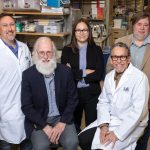 The Salk Institute and Lustgarten Foundation form strategic pancreatic cancer research partnershipSupported by a $5 million grant, the partnership aims to identify and validate potential targets for new pancreatic cancer drugs. Four participating labs, led by Salk Professors Reuben Shaw, Ronald Evans, Tony Hunter and Assistant Professor Dannielle Engle, will bring their individual areas of complementary expertise to bear on the collaborative goal.
The Salk Institute and Lustgarten Foundation form strategic pancreatic cancer research partnershipSupported by a $5 million grant, the partnership aims to identify and validate potential targets for new pancreatic cancer drugs. Four participating labs, led by Salk Professors Reuben Shaw, Ronald Evans, Tony Hunter and Assistant Professor Dannielle Engle, will bring their individual areas of complementary expertise to bear on the collaborative goal.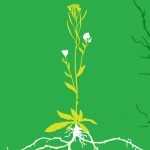 The weed that changed the worldHow Arabidopsis thaliana became one of the most important tools in science—and how the information the small weed has revealed over decades of research now enables the development of Salk Ideal PlantsTM, a new generation of food crops that are better equipped to both thrive in a changing climate and help mitigate it.
The weed that changed the worldHow Arabidopsis thaliana became one of the most important tools in science—and how the information the small weed has revealed over decades of research now enables the development of Salk Ideal PlantsTM, a new generation of food crops that are better equipped to both thrive in a changing climate and help mitigate it.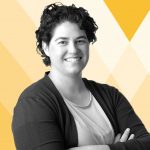 Courtney Glavis-Bloom — Shining the spotlight on aging to find a cure for Alzheimer’s diseaseSenior Staff Scientist Courtney Glavis-Bloom’s work is driven by her experience caring for her grandparents, who were diagnosed with Alzheimer’s disease when she was in high school. She saw firsthand how dementia robs individuals of their connections to the world—now she studies the brain areas affected in aging in the hope of finding a cure.
Courtney Glavis-Bloom — Shining the spotlight on aging to find a cure for Alzheimer’s diseaseSenior Staff Scientist Courtney Glavis-Bloom’s work is driven by her experience caring for her grandparents, who were diagnosed with Alzheimer’s disease when she was in high school. She saw firsthand how dementia robs individuals of their connections to the world—now she studies the brain areas affected in aging in the hope of finding a cure.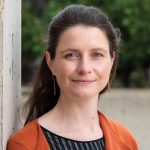 Helen McRae — Leveraging the body’s own immune response for more effective cancer therapiesHelen McRae was a graduate student when her cousin was diagnosed with lung cancer and received immunotherapy—an approach that empowers a patient’s own immune system to destroy tumors. McRae saw the promise of this newer treatment, but also how much more research is needed to help it work for more people.
Helen McRae — Leveraging the body’s own immune response for more effective cancer therapiesHelen McRae was a graduate student when her cousin was diagnosed with lung cancer and received immunotherapy—an approach that empowers a patient’s own immune system to destroy tumors. McRae saw the promise of this newer treatment, but also how much more research is needed to help it work for more people.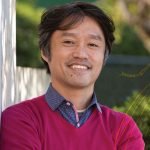 Kenta Asahina – Flying into the future of technology and innovationOriginally from Japan, Associate Professor Kenta Asahina grew up exploring nearby farmlands with his two brothers in search of insects and plants. Their dad enjoyed taking them to the mountains and national parks. These experiences inspired his interest in the natural world, and Asahina now studies how genetics impact fruit fly behavior.
Kenta Asahina – Flying into the future of technology and innovationOriginally from Japan, Associate Professor Kenta Asahina grew up exploring nearby farmlands with his two brothers in search of insects and plants. Their dad enjoyed taking them to the mountains and national parks. These experiences inspired his interest in the natural world, and Asahina now studies how genetics impact fruit fly behavior.




















































